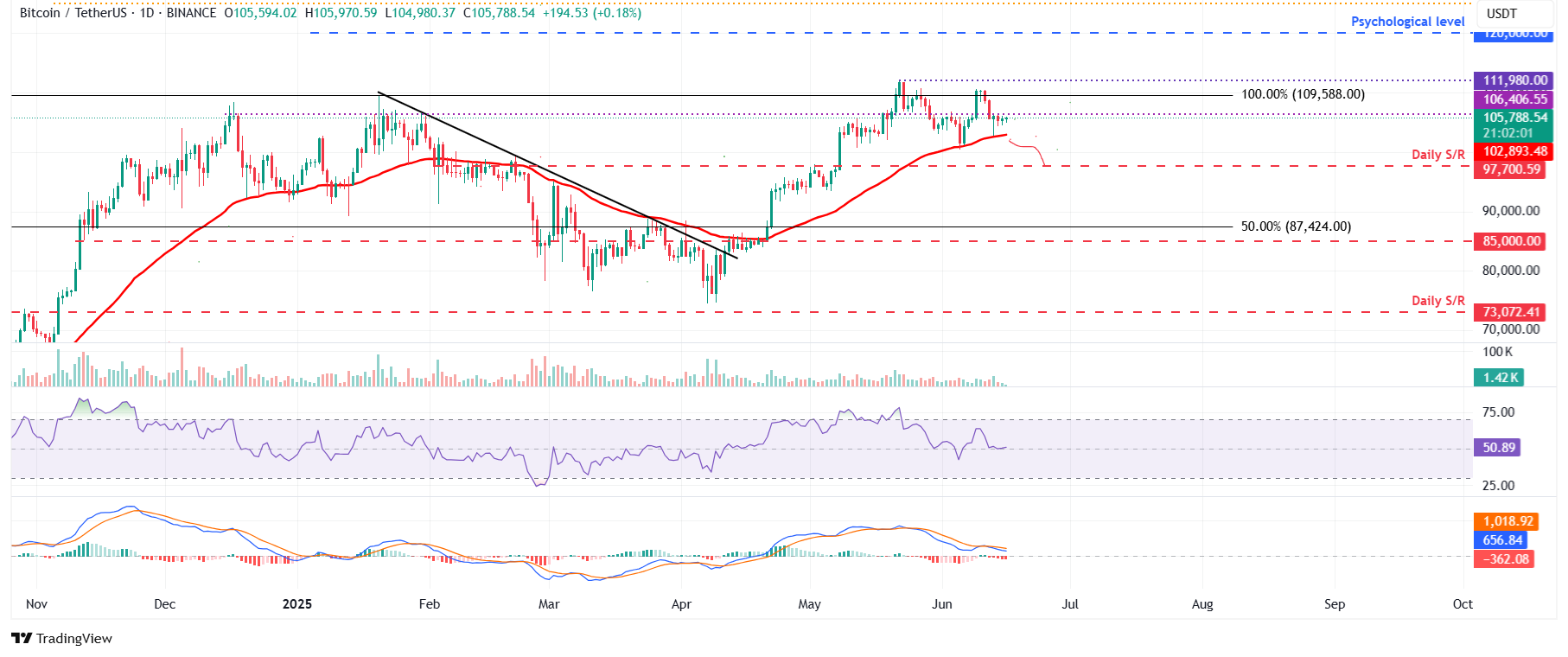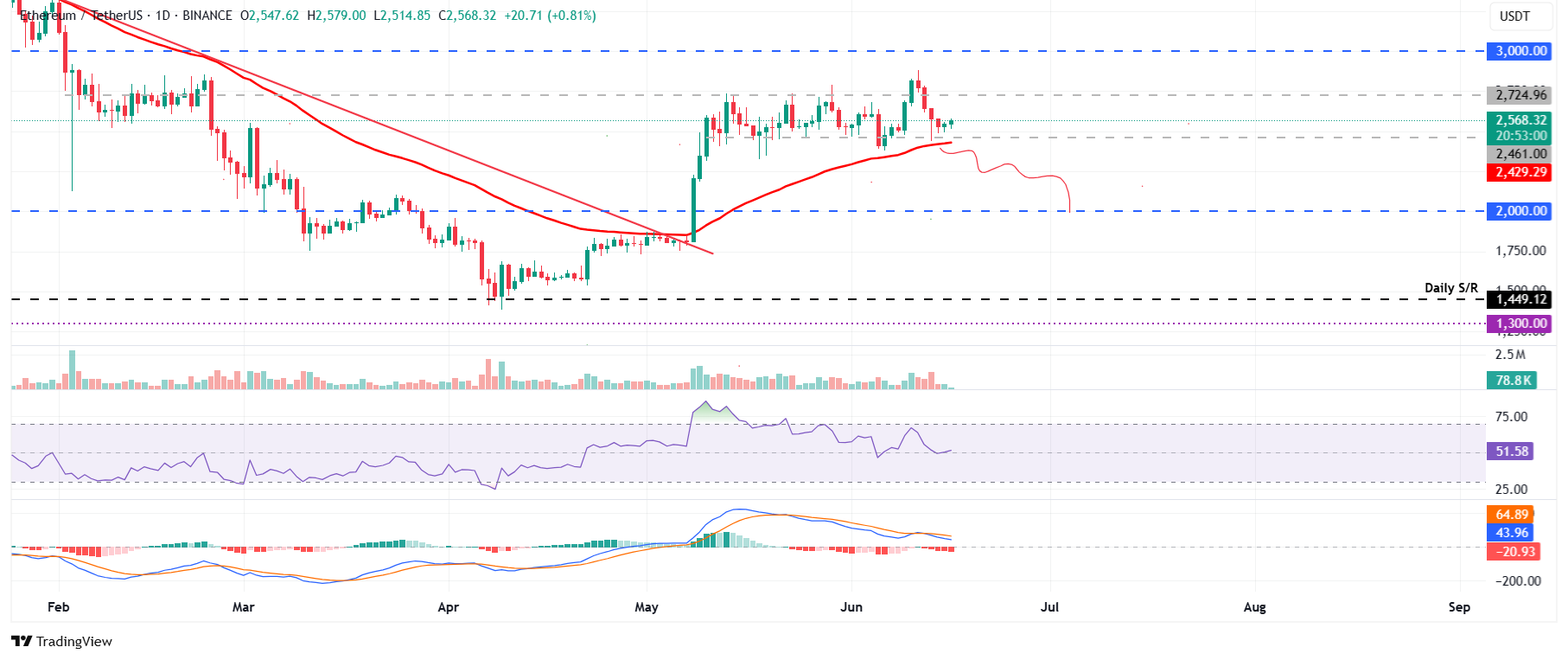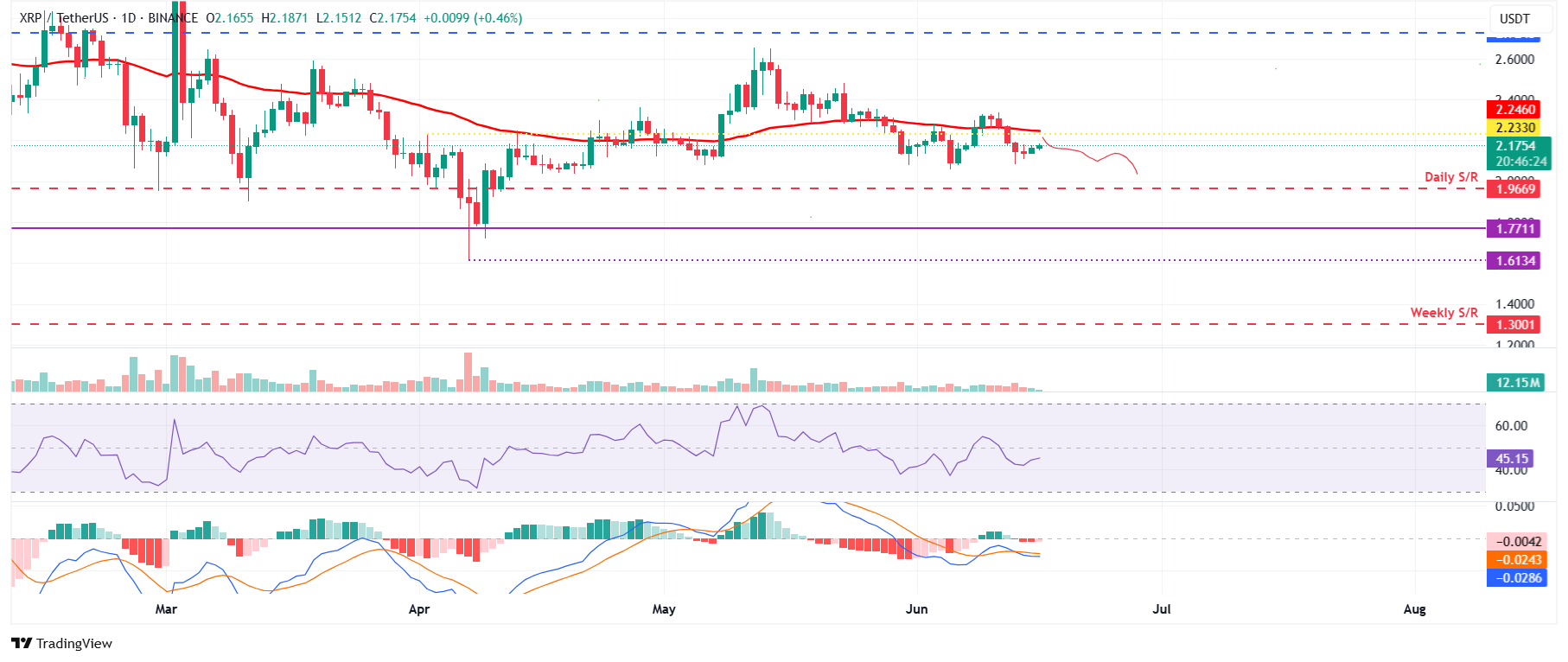Top 3 Price Prediction: Bitcoin, Ethereum, Ripple – BTC, ETH, and XRP stabilize near critical support levels
- Bitcoin price stabilizes around $105,000 on Monday after closing below its key support level the previous week.
- Ethereum hovers around its lower consolidation boundary of $2,461; a close below would indicate a correction ahead.
- Ripple's XRP closes below its 50-day EMA support at $2.24, increasing the chances of a deeper correction.
Bitcoin (BTC), Ethereum (ETH), and Ripple (XRP) are showing signs of stabilization around key support levels after a recent correction last week. BTC attempts to regain strength after closing below its critical support level, while ETH and XRP hover near technical thresholds that could determine the direction of their next moves.
Bitcoin could decline if it closes below its 50-day EMA
Bitcoin price closed below its daily support level of $106,406 on Thursday and rebounded after retesting its 50-day Exponential Moving Average (EMA) at $102,893 the following day. BTC stabilized around the $105,000 level during the weekend. At the time of writing on Monday, it continues to consolidate, trading at around $105,788.
If BTC fails to close above the $106,406 resistance level and declines, it could extend the decline to retest its key, psychologically important level at $100,000.
The Relative Strength Index (RSI) on the daily chart is hovering around its neutral level of 50, indicating indecisiveness among traders. The Moving Average Convergence Divergence (MACD) indicator on the daily chart displayed a bearish crossover, signaling a sell and indicating a downward trend.

BTC/USDT daily chart
However, if BTC recovers, it could extend the recovery to retest its daily level of $106,406.
Ethereum could face a downleg if it closes below its 50-day EMA
Ethereum price failed to find support around the upper consolidation level of $2,724 on Thursday and declined by 8.69% until Saturday. However, ETH hovered above its lower consolidation boundary of $2,461 the next day. At the time of writing on Monday, it continues to hover above this level.
If ETH faces a correction and closed below its 50-day EMA at $2,429, it could extend the decline to retest its next support level at $2,000.
The RSI on the daily chart is hovering around its neutral level of 50, indicating indecisiveness among traders. The MACD indicator on the daily chart displayed a bearish crossover, signaling a sell and indicating a downward trend.

ETH/USDT daily chart
On the other hand, if ETH finds support around its lower consolidation boundary at $2,461, it could extend the recovery to retest its upper consolidation boundary at $2,724.
XRP is poised for a downleg below its 50-day EMA
XRP price closed below its 50-day EMA level at $2.24 on Thursday and declined nearly 6% until Saturday. However, it recovered slightly by 1.22% the next day. At the time of writing on Monday, it is nearing its 50-day EMA at $2.24.
If XRP faces a rejection from its 50-day EMA, it could extend the decline to retest its next daily support level at $1.96.
The RSI on the daily chart reads 45, below its neutral level and points downward, indicating strong bearish momentum. Moreover, the MACD indicator on the daily chart displayed a bearish crossover, signaling a sell and indicating a downward trend.

XRP/USDT daily chart
Conversely, if XRP recovers, it could extend to retest its 50-day EMA at $2.25.
Bitcoin, altcoins, stablecoins FAQs
Bitcoin is the largest cryptocurrency by market capitalization, a virtual currency designed to serve as money. This form of payment cannot be controlled by any one person, group, or entity, which eliminates the need for third-party participation during financial transactions.
Altcoins are any cryptocurrency apart from Bitcoin, but some also regard Ethereum as a non-altcoin because it is from these two cryptocurrencies that forking happens. If this is true, then Litecoin is the first altcoin, forked from the Bitcoin protocol and, therefore, an “improved” version of it.
Stablecoins are cryptocurrencies designed to have a stable price, with their value backed by a reserve of the asset it represents. To achieve this, the value of any one stablecoin is pegged to a commodity or financial instrument, such as the US Dollar (USD), with its supply regulated by an algorithm or demand. The main goal of stablecoins is to provide an on/off-ramp for investors willing to trade and invest in cryptocurrencies. Stablecoins also allow investors to store value since cryptocurrencies, in general, are subject to volatility.
Bitcoin dominance is the ratio of Bitcoin's market capitalization to the total market capitalization of all cryptocurrencies combined. It provides a clear picture of Bitcoin’s interest among investors. A high BTC dominance typically happens before and during a bull run, in which investors resort to investing in relatively stable and high market capitalization cryptocurrency like Bitcoin. A drop in BTC dominance usually means that investors are moving their capital and/or profits to altcoins in a quest for higher returns, which usually triggers an explosion of altcoin rallies.



